To grade a Buffalo nickel, examine wear on key areas including the buffalo’s horn and back on the reverse, plus the Native American’s cheekbone and braid on the obverse. Grades range from Good (G) with heavy wear but visible date, to Mint State (MS-70) showing no wear and full luster. Assess the coin’s strike quality, original mint shine, and overall eye appeal. Consider key dates like 1913-S Type 2, 1921-S, and 1924-S, which command higher values. Distinguish wear (flat, dull surfaces) from poor strikes (rounded but lacking detail). Higher grades like Extremely Fine retain sharp horn and braid details, while lower grades show significant flattening on high points.
Buffalo nickels remain among the most challenging American coins to grade accurately, with even experienced collectors sometimes struggling to distinguish circulation wear from weak strikes. The key lies in understanding exactly where to look and what separates a $5 coin from one worth $500. By focusing on specific diagnostic points like the buffalo’s horn and understanding key date premiums, you can confidently assess these iconic five-cent pieces without expensive professional services for most specimens.
Understanding the Buffalo Nickel’s Vulnerable Design Points
James Earle Fraser’s 1913 design placed critical details on the coin’s highest points, making them extremely susceptible to wear. On the reverse, the buffalo’s horn sits at the absolute apex of the design, typically showing wear before any other feature. A full horn with complete separation from the buffalo’s head indicates minimal circulation, while a completely flat area where the horn should be signals heavy wear.
The horn’s detail progression provides the most reliable grading anchor. In Mint State condition, you’ll see crisp definition where the horn curves away from the head, with texture visible along its length. About Uncirculated specimens show slight flattening at the horn’s tip but retain most detail. Extremely Fine examples display a horn that’s approximately half worn, with the upper portion smooth but the base still defined. Very Fine coins show only a suggestion of the horn as a raised bump, while Good grade pieces have the horn area completely smooth and level with the surrounding surface.
On the obverse, the Native American portrait’s cheekbone serves as the primary wear indicator. This raised feature loses its roundness quickly in circulation, becoming progressively flatter. The hair braid behind the portrait represents the second critical checkpoint—uncirculated coins show individual hair strands, while circulated pieces gradually lose this detail until only the braid’s outline remains on heavily worn examples.
The Strike Quality Complication
Buffalo nickels present a unique challenge: distinguishing genuine wear from weak strikes. The United States Mint struggled with this design from day one, frequently producing coins with incomplete details straight from the dies. A 1920-D in About Uncirculated condition might show less horn detail than a well-struck 1936 in Fine grade.
Weak strikes appear rounded and sometimes retain mint luster even in areas lacking detail. The metal simply didn’t flow completely into the die’s recesses during striking. Circulation wear, by contrast, creates flat, dull surfaces where metal has been physically abraded away. On the buffalo’s back and shoulder, weak strikes show soft, mushy details with possible luster, while wear produces smooth, shiny spots from handling.
The Three-Legged Buffalo variety from 1937-D perfectly illustrates this distinction—the missing front leg resulted from die polishing, not wear. Learning to spot these manufacturing issues prevents costly grading mistakes. A weakly struck Mint State coin might initially appear to be Extremely Fine due to missing details, but the presence of original luster across the entire surface reveals its true uncirculated status.
Practical Grading Benchmarks for Each Major Grade
Good (G-4): The date must be complete and legible, which proves challenging on early Type 1 nickels from 1913 where the date sat on the raised mound. The buffalo’s outline remains clear but appears as a silhouette with minimal internal detail. The horn area is completely smooth. On the obverse, facial features have merged into flatness. Despite heavy wear, the coin maintains its essential design identity. A common-date 1936 Buffalo nickel in Good typically sells for $1.50 to $2.50.
Fine (F-12): Approximately half the major design details remain visible. The buffalo’s horn shows as a raised bump without definition. Individual hair strands have disappeared, but the braid’s rope-like appearance persists. The Native American’s cheekbone shows clear flattening but hasn’t merged with surrounding features. The ribbon on the braid remains distinct. Market value for common dates in this grade ranges from $3 to $5.
Very Fine (VF-20): About three-quarters of the original detail survives. The horn exhibits clear separation from the head at its base, though the upper half shows wear. The buffalo’s shoulder and hip muscles remain partially defined. Hair detail appears on the lower portion of the braid, and the cheekbone retains modest roundness. Common dates command $8 to $12 in this grade.
Extremely Fine (EF-40): Only the highest points show wear. The horn is nearly complete with just slight flattening at its tip. Hair strands are visible across most of the braid. The cheekbone shows minimal flatness, retaining most of its original contour. The braid’s tie ribbon displays full detail. Some mint luster may appear in protected areas like between letters. Expect to pay $15 to $25 for common dates.
About Uncirculated (AU-50 to AU-58): The coin retains 50% to 90% of its original mint luster. Wear appears only on the absolute highest points—the horn’s very tip, the cheekbone’s peak, and the hair above the braid. Under magnification, you can distinguish circulation wear from contact marks. The fields show significant luster. Common dates in AU-58 trade for $30 to $50.
Mint State (MS-60 to MS-70): No circulation wear exists anywhere on the coin. Grading focuses on strike quality, luster intensity, surface preservation, and eye appeal. MS-60 coins show numerous bagmarks and possibly lackluster surfaces. MS-65 examples display strong luster, minimal marks, and good eye appeal—common dates sell for $75 to $150. MS-66 and higher coins feature exceptional surfaces and typically require professional certification. A 1938-D/S in MS-67 sold for $3,840 at Heritage Auctions in 2023, demonstrating how condition dramatically affects value.
Key Dates That Transform Value Calculations
Certain dates carry substantial premiums regardless of grade, making accurate assessment critical. The 1913-S Type 2 ranks as the series’ key date, with only 1,209,000 minted. In Good condition, examples trade for $175 to $250, while VF specimens reach $800 to $1,200. An MS-65 example commanded $47,000 at auction in 2022.
The 1918/7-D overdate variety represents another significant prize. With only 8 million pieces struck and the overdate premium, Good grade examples sell for $1,500 to $2,000. Fine specimens bring $4,000 to $5,500, while EF examples exceed $15,000.
Other important dates include the 1921-S (mintage: 1,557,000), worth $85 in Good and $500 in VF; the 1924-S (mintage: 1,437,000), valued at $50 in Good and $350 in VF; and the 1926-S (mintage: 970,000), trading for $25 in Good and $300 in VF.
The 1937-D Three-Legged variety, caused by excessive die polishing, sells for $700 to $900 in Good condition and $2,500 in VF. An MS-65 example reached $99,875 at Stack’s Bowers in 2023, making proper authentication essential.
Building Your Grading Reference Collection
Developing grading skills requires hands-on experience with authenticated examples. Purchase certified coins in different grades from reputable third-party services like PCGS or NGC. A basic reference set might include a common date like 1936 in Good, Fine, Very Fine, Extremely Fine, and About Uncirculated—total investment approximately $30 to $50.
Compare your raw coins directly against these standards under good lighting with 5x to 10x magnification. A jeweler’s loupe or USB microscope (available for $15 to $40) proves invaluable. Examine the horn from multiple angles, as lighting direction dramatically affects apparent detail. Natural daylight or a daylight-balanced LED lamp provides optimal viewing conditions.
Photography assists learning. Take detailed images of diagnostic areas on your certified coins, then compare against raw specimens. This creates a visual library for future reference. Online resources like PCGS CoinFacts provide high-resolution images of professionally graded coins across the spectrum.
Practice with common dates before attempting valuable key dates. The grading principles remain identical, but the financial stakes increase dramatically. A two-grade difference on a 1936 Philadelphia nickel might mean $10, while the same difference on a 1913-S Type 2 could represent $500 or more.
Spotting Altered and Problem Coins
Buffalo nickels frequently suffer from attempts at improvement that destroy collector value. The most common alteration involves acid treatment to enhance readable dates on worn specimens, particularly Type 1 coins from 1913 where the date wore rapidly. These treatments create unnatural surface porosity visible under magnification. The affected area appears grainy or spongy compared to surrounding metal.
Added mint marks represent another fraud concern, especially on valuable Denver and San Francisco issues. Examine mint marks under magnification for signs of tooling, different metal color, or inconsistent surface texture compared to surrounding areas. Authentic mint marks show the same patina and wear pattern as adjacent design elements.
Environmental damage—corrosion, verdigris, cleaning, and scratches—significantly reduces value even if the grade remains technically accurate. Professional grading services often assign “Details” grades to these coins, noting the problem. A “VF Details—Cleaned” designation indicates Very Fine technical grade but warns of the cleaning issue that prevents a straight grade.
When Professional Grading Makes Financial Sense
Submitting coins for third-party grading costs $20 to $40 per coin for standard service, making it economically viable only for specific situations. Key dates, overdates, and varieties always warrant professional certification due to their premium values and fraud risk. A certified 1918/7-D protects both your investment and provides confidence to future buyers.
Common dates typically require certification only in Mint State condition, where subtle grade differences create significant value gaps. The difference between MS-64 and MS-65 might represent $50 on a 1935, but that $30 grading fee becomes worthwhile when selling. Uncertified high-grade coins often sell at discounts approaching the certification cost anyway, as buyers factor risk into their offers.
For coins you suspect grade AU-58 or higher, professional assessment often proves worthwhile. The distinction between AU-58 and MS-60 can be extremely subtle, yet this boundary marks the difference between circulated and uncirculated—a psychologically important threshold affecting value. Grading services employ multiple expert opinions and consistent standards that individual collectors cannot match.
Advanced Diagnostic Techniques for Difficult Cases
Some Buffalo nickels resist easy grading due to unusual characteristics. Coins with original toning require special attention—heavy toning can mask wear or create false appearances of damage. Examining toned areas under strong light at various angles helps distinguish genuine underlying surfaces from problems. Toning should appear naturally graduated and conform to the coin’s contours rather than forming suspicious patterns.
Die polish lines, which appear as raised parallel striations, sometimes mimic wear on the horn or cheekbone. These resulted from mint workers polishing dies and appear as raised metal, opposite of wear. They’re particularly common on 1937-D and 1938-D issues. Die polish shows consistent parallel patterns across affected areas and appears on both high and low points, while wear concentrates exclusively on raised design elements.
Strike doubling can create confusion with genuine doubled die varieties. Strike doubling produces a flat, shelf-like doubling visible primarily on one side of design elements, while hub doubling creates rounded, separated images. This distinction proves crucial on potential varieties—genuine doubled dies command premiums, while strike doubling adds no value.
Creating Your Personal Grading System
While professional standards provide the foundation, developing a personalized approach improves consistency. Create a grading worksheet listing specific diagnostic points with space for notes. For Buffalo nickels, this might include: horn detail (0-10 scale), cheekbone roundness (flat/slight/moderate/full), braid definition (0-10), luster percentage (0-100%), and overall eye appeal (poor/average/good/excellent).
Photograph each coin you grade with notes about your assessment and reasoning. When you eventually sell or get professional opinions, compare results against your predictions. This feedback loop accelerates learning. Track your accuracy—if you consistently grade two points higher than professional services, you’ve identified a personal bias to correct.
Study auction results for recently sold coins with images. Major auction houses like Heritage, Stack’s Bowers, and Great Collections provide archived lots with detailed photographs and final prices. Examining what actually sold at what grade and price provides reality-based education impossible to gain from static reference materials alone.
Maximizing Returns Through Accurate Assessment
Proper grading directly impacts your collecting budget’s efficiency. Overpaying for overgraded coins wastes resources, while under-appreciating quality pieces means missed opportunities. A 1935-S in genuine MS-64 condition at $85 represents fair value, but the same coin incorrectly graded MS-63 at $60 offers excellent value. Conversely, an AU-58 piece misrepresented as MS-63 at $85 constitutes a poor purchase.
Understanding the horn’s diagnostic importance prevents common buyer mistakes. Sellers sometimes photograph Buffalo nickels at angles that obscure horn wear, making circulated coins appear better than reality. Always request images showing the reverse at a straight angle with clear horn visibility before purchasing sight-unseen. For valuable pieces, consider requesting a short video that shows the coin rotating under light, revealing luster patterns and surface characteristics impossible to fake.
Building relationships with reputable dealers who accurately grade their inventory provides long-term value. These sellers might charge slightly higher prices than optimistic graders, but you receive properly described coins that hold value. Track your purchase sources and their accuracy—dealers consistently providing correctly graded coins deserve your continued business and referrals.
You may be interested:
- 1911 V Nickel Coin Value Guide Complete Errors List And No Mint Mark Worth Today
- 1920 Buffalo Nickel Coin Value Complete Errors List And What Your D S And No Mint Mark Are Actually Worth
- 1923 Buffalo Nickel Coin Value Complete Errors List And S Mint Mark Worth Guide
- 1925 Buffalo Nickel Coin Value Complete Price Guide For D S No Mint Mark And Error Varieties Worth Thousands
- 1926 Buffalo Nickel Coin Value Complete Guide D S And No Mint Mark Worth Plus Errors List
- Complete 1927 Indian Head Buffalo Nickel Coin Value Guide D S No Mint Mark Errors List And Worth
- How To Grade Peace Silver Dollar Using The Sheldon Scale And Key Wear Areas
- How To Grade Walking Liberty Half Dollar Inspect High Points Luster And Wear For Accurate Assessment

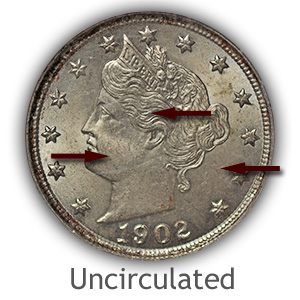
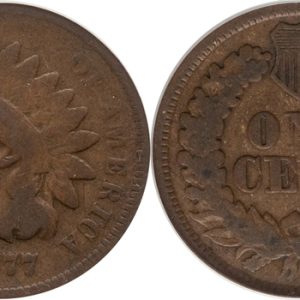
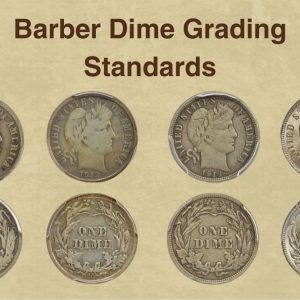
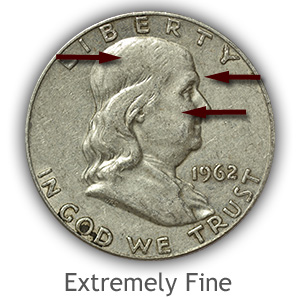
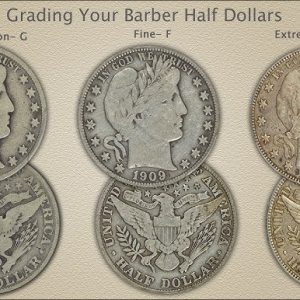
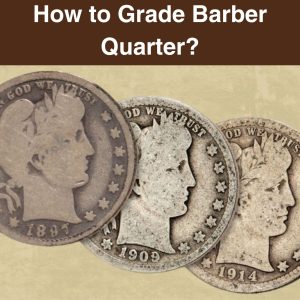
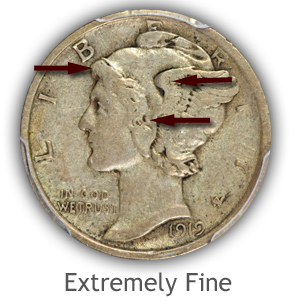

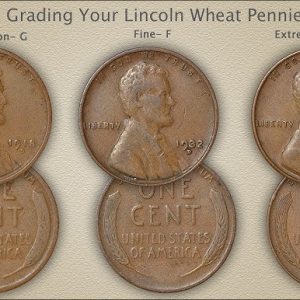
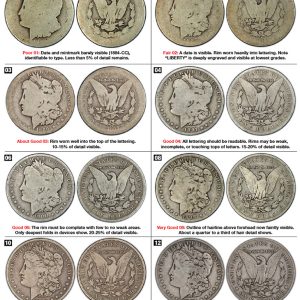
How much does it cost to grade a nickel?
The cost to get a coin graded typically ranges from $20 to $75 for standard submissions, with premium services or high-value coins costing $100 or more. Additional expenses such as membership, shipping, insurance, handling fees, and optional services can raise the total.
What is the difference between type 1 and type 2 Buffalo nickel?
The main difference between Type 1 and Type 2 Buffalo nickels is the design of the ground under the buffalo on the reverse side. Type 1 nickels have a raised mound on which the words “FIVE CENTS” are placed, causing them to wear off quickly. Type 2 nickels have a recessed or sunk-in area (an “exergue”) to protect the inscription from wearing down prematurely.
How to tell if a Buffalo nickel is valuable?
A Buffalo nickel’s value depends on its condition, date, and mint mark, with some key errors making it significantly more valuable. To determine its worth, look for valuable mint marks like “S” (San Francisco) or “D” (Denver), check for rare dates like 1916, 1918, or 1937, and inspect for valuable errors such as a “three-legged” buffalo or a doubled die.
How can I tell what year my Buffalo nickel is?
To date a Buffalo nickel, you must find the year on the shoulder of the Indian head design, just above the designer’s “F”. If the date is worn, you can use magnification and strong lighting to find faint traces of numbers. For very worn coins, a chemical process using Nic-A-Date or similar acid can be used to reveal the latent date, but this damages the coin and lowers its value.